“I’ve always felt like the figure is a foil in the paintings to talk about humanity, but using the figure just as an entry point”
The paintings of Christina Quarles are inhabited by curious figures: elastic humanoids, often with elongated limbs and spindly, delicate fingers that reach out beyond the ambiguously defined planes of existence which they seem to be occupying. These contortionists seem uneasy – their bodies interlocked, sometimes embracing, sometimes clutching at each other’s elusive appendages in a struggle for intimacy. As in her current show in Berlin’s Hamburger Bahnhof, Collapsed Time, at times their dance is backdropped by the floral patterns of wallpaper, or distant mountains; at other points, their world more proscribed by monolithic walls and windows, attempting to manoeuvre in a shifting symbolic universe. Here, Quarles speaks about legibility, the code switching of our sense of space, and depicting the body beyond categorisation.
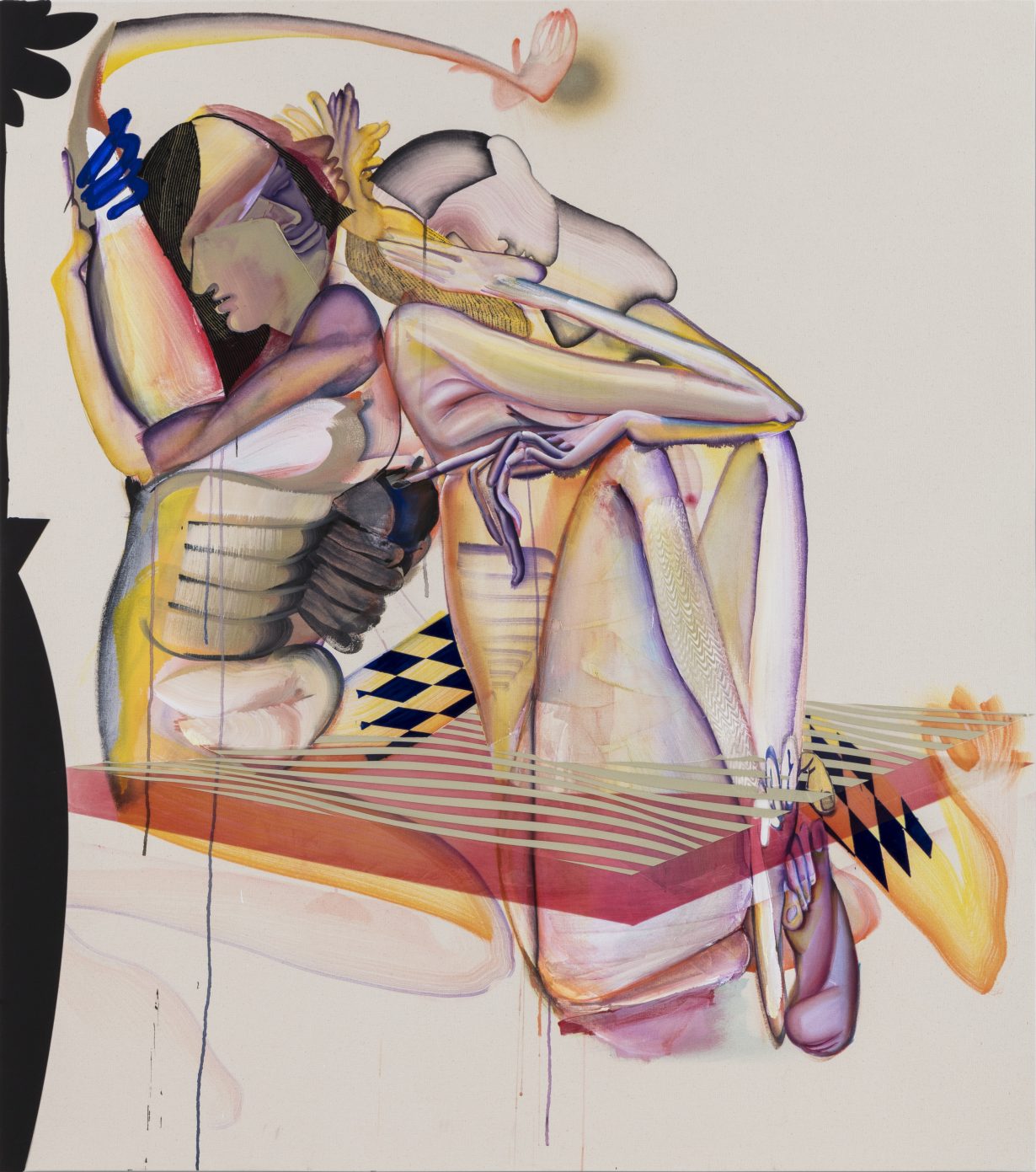
ArtReview You stated once that when you moved to painting from drawing, language was replaced by pattern. Can you elaborate on that?
Christina Quarles When I was first moved into painting in grad school, I just went ahead and wrote on the canvases alongside the imagery that I was working with. All the things that I loved about text were the way that it flattened a plane, literally, and that it is also a reference to something that isn’t there. It was a way of creating this common ground, something like a shared understanding, that was also really specific to the individual reading it. So much of my work is about the way that you read an image and the way that an image unfolds with meaning, based on how we’re sort of trained and taught to read an image. I think that there’s just an inevitable desire when you see a visual image to understand it, and to find answers quickly. We don’t trust ourselves to live with the visual image. If there’s text, most people will go to the text to answer the image because it’s scary to be in that place of not understanding. Since I wasn’t using the text as a caption for the narrative or for a conclusion about the image, I found that it was like putting in a few red herrings, and that felt unnecessarily misleading – to be like, here’s text on the bottom righthand corner with an image above it and the two do not have anything to do with one another. That’s rude! So when I took out the language, I found that I still needed something. Also there is this element in my paintings of having areas where the paint will just be linear and it won’t be filled in. Text was the anchor for a work to feel like a finished set of choices. When I removed the text, I found that the anchor was missing. I wanted something that could anchor the work in that shared language that you could hook into, but which was also open-ended. I looked for patterns that are sort of a reference: something that you’ve maybe seen in art history, but maybe it’s actually from television and maybe it’s television referencing art history. So it still has that iterative quality.
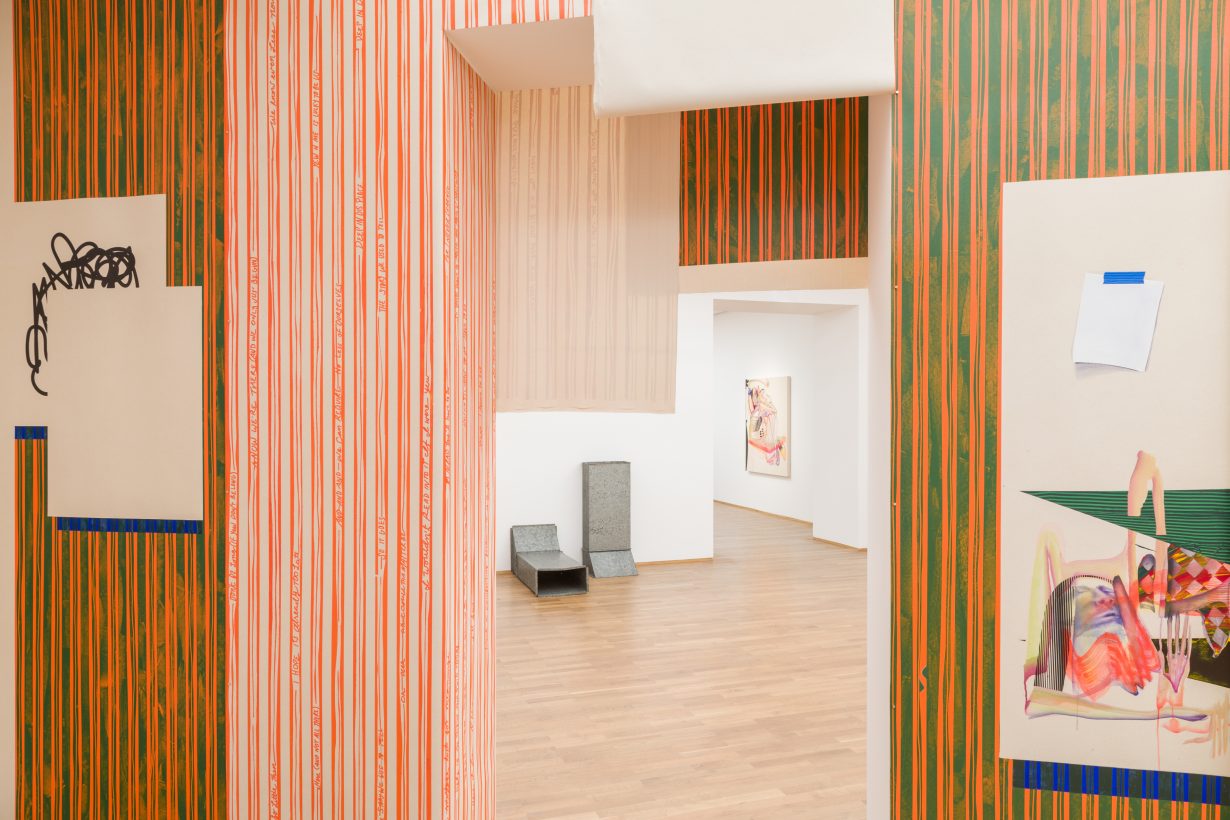
AR Is it important that it remains a two-dimensional flattening?
CQ Yes, the flattening is part of it. In many ways the idea of pattern and planes in my work could replace the way that I think about language. It is a more two-dimensional reference to something that you have to complete in your memory. I always try to find – whether it’s language or imagery – moments of punning and double meaning. That’s important to me.
AR Is this why the bodies that are depicted are pushed to the brink of legibility? There’s a push and pull of recognisability, areas where that legibility is distinct and then breaks down.
CQ I’m interested in having moments of legibility that are immediately apparent and then other contextual clues within the painting that undermine that first reading. That legibility breaks down not because there’s a lack of information, but because there’s too much information that contradicts itself. That’s always the standpoint I have: away from the idea of a lack and into the idea of excess.

AR It becomes more like signal and noise versus figure and ground.
CQ Exactly. I find that question of legibility to be central to my practice.
AR You have said that you like to use Adobe Illustrator as part of your process because of the ability to scale infinitely: the vector image versus the bitmap. A lot of the work has either a kind of architectural element that defines a space or there are the 2d planes that have been rotated into space that lay out a zone in the canvas. How do you conceive of the scale and space of your paintings?
CQ I think of the composition of the figures in architecture within the painting to exist fully within that canvas space. It’s sort of like outside of the painting none of the elements of the painting exist. Even though I’m referencing moments of architecture or pattern or imagery that I have seen, whether it’s high moments of architecture and art or these very low or mass forms of culture. The figures also come from the sustained practice of figure drawing with live models. But when I come to the painting, all of that is just used as snippets of memory that get filtered through the process of making the painting. Scale is very much determined by the edge of the canvas, and constants that relate purely to my scale of making. The way I think about the scale of painting is really related to my physical scale and the figures within it. They’re interacting with objects and the environment that relates to their scale. It’s because they are more in this embodied state of experiencing the world.
Sometimes we have, whether it’s an awareness of our own body or the spaces that we’re in, moments when the scale of things is unnoticed or unseen because we seamlessly move through the scale of our world. And then there are other times when there really is a misfit between how we fit into our environments or how our environments fit into us. It’s like, when you become really aware, you’re like, ‘oh, I’m in a seat that’s too small for me’, or ‘I’m in a couch that’s making my body sink too much’. So it’s how to represent those moments of moving through a world that is taken as a given. We take architectural spaces as a given, but they’re actually decisions that were made, representations of how a body would move through them. What does it mean when your body doesn’t quite work in that space? There is a distortion of scale within the figuration. It’s more how you feel your body. How if there’s a part of your body that’s in pain, for example, it distorts the scale of your perception. It’s more a sense of perceived scale. But it’s always related to the physical limitations of my wingspan. Which is why the computer and bringing in the digital is something that I like. It’s a way of working more in that psychic space without having it always be interpreted via my own body.
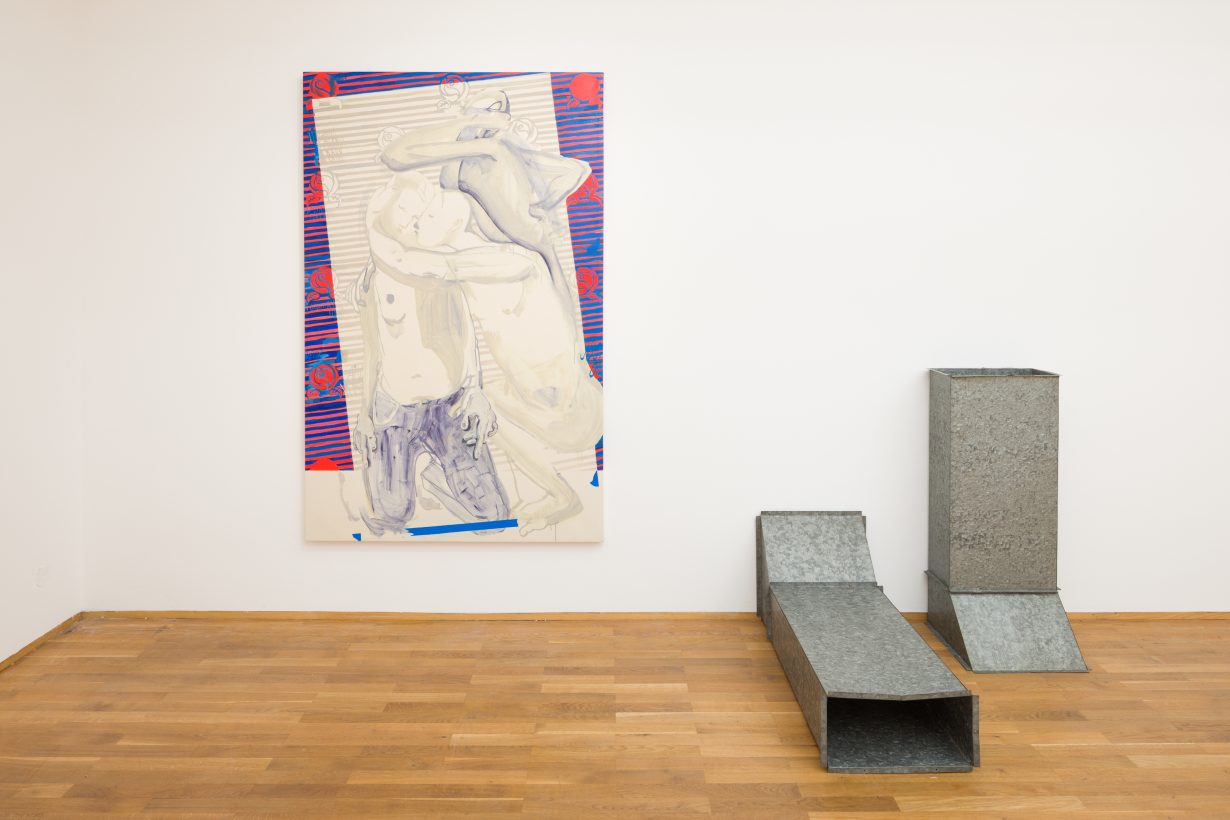
AR Do you think of every painting as an attempt to look at or develop this sense of perceived embodied experience?
CQ It’s also just the feeling of that disconnect, and at other times the harmonious experience of your sense of self moving through the world. I think of this idea kind of like code switching: how you are constantly aware of how your sense of self is shifting in your environment. It’s always this sort of play between occupying space versus being occupied by space; what it means to be a person that can occupy space and what it means to be a person that is occupied by space.
AR Space not as neutral but always coded.
CQ I don’t really adhere to this idea of neutrality. I think that everything has a presence. It’s just there are certain states of being where you’re not having to be aware of that presence because it is catered to how you move through the world.
AR In the past when you’ve said your work is about what it’s like to ‘live in a body’ – this is a curious way of putting it, because it implies a kind of inherent dualism. But I don’t get the sense that you believe that, right? I’d argue your work is an attempt to demonstrate the irrelevance or the illogic of that dualism. Embodiment is a process or a practice, like painting is a practice, and one can be more or less attuned to it. This is where we come to how you adapt to spaces or communities that you either do or don’t line up with, which is where the conversations about race and gender usually come in. But once you’re past those initial categories, there is a more universal problem, this problem of embodiment.
CQ Those ideas of race or gender, all identity categories, they are the product of that problem, which is more universal. I think that it’s easy to function in the framework of a duality or of a binary, and I fall into that trap a lot myself, even with the language and ways that I discuss my work. But I do think that one of the reasons why I make art is because I can express these ideas through the art.
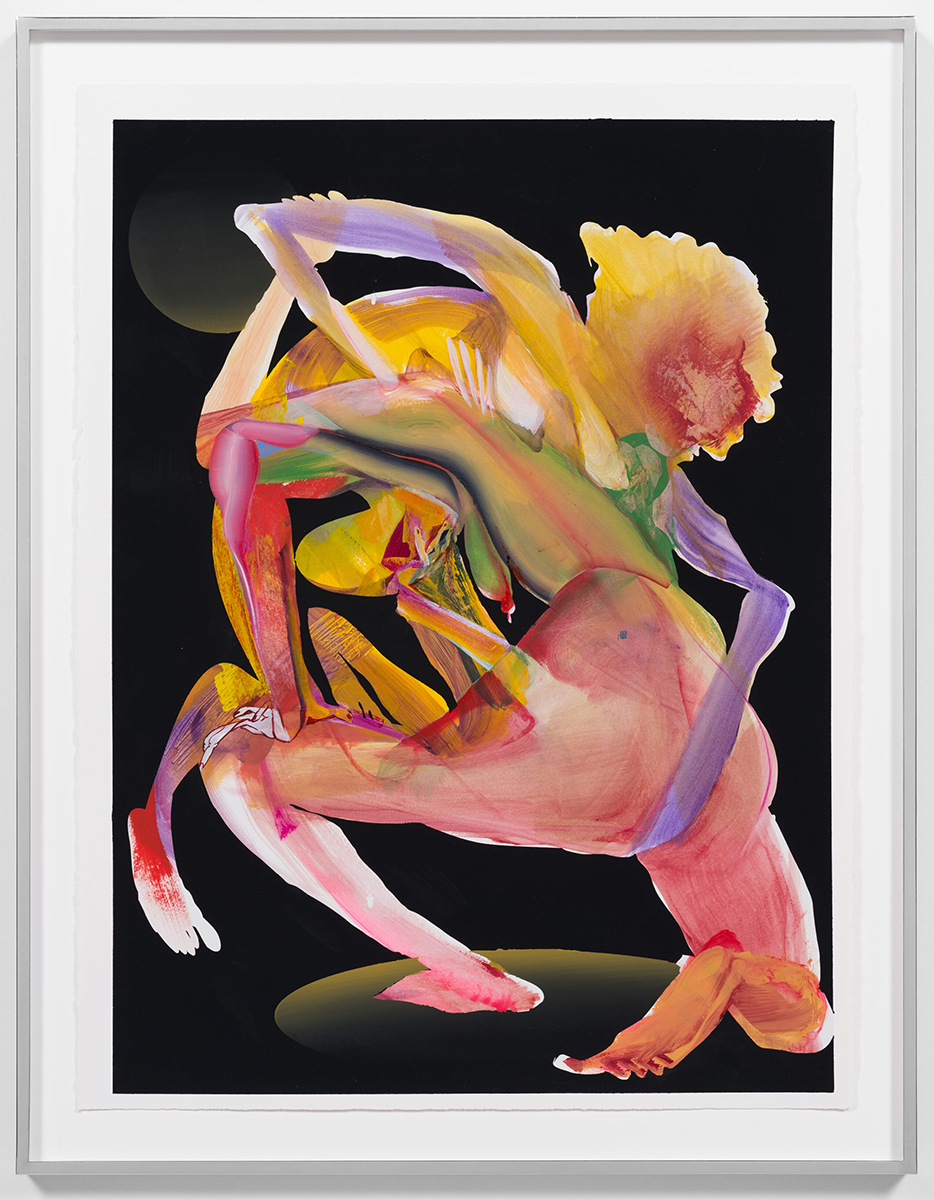
AR Though race and gender or sexuality are almost always mentioned in the context of your work, I think what’s interesting is that the perceptual and cognitive demands of the viewer have more to do with some process of recognition, of something becoming legible, and cognisable, rather than merely identifiable. Your figures appear as prior to any given representational category. They are pushing the boundaries of recognition, not representation. Would you agree?
CQ I think that’s a different way of phrasing this idea of ‘living in a body’ versus looking at a body. Living in a body is more like that recognition rather than that externalised or internalised representation. Recognition is actually going past that facade of representation. That idea of representation, it still creates this dynamic that others, and it still creates a dynamic that maintains the current power structure. Because it ignores the fact that if you can easily move through the world, it doesn’t mean that you aren’t still moving through a bunch of systems that were designed to organise how you have to move within them. There are people who have not had to question their identity as much, but it doesn’t mean that there aren’t a whole host of assumptions being made about them. So yes, pushing the limits of recognition while still having elements that you can easily latch onto – pattern is one and figuration is a huge one; we try to find a figure in almost anything. I’ve always felt like the figure is a foil in the paintings to talk about humanity, but using the figure just as an entry point.
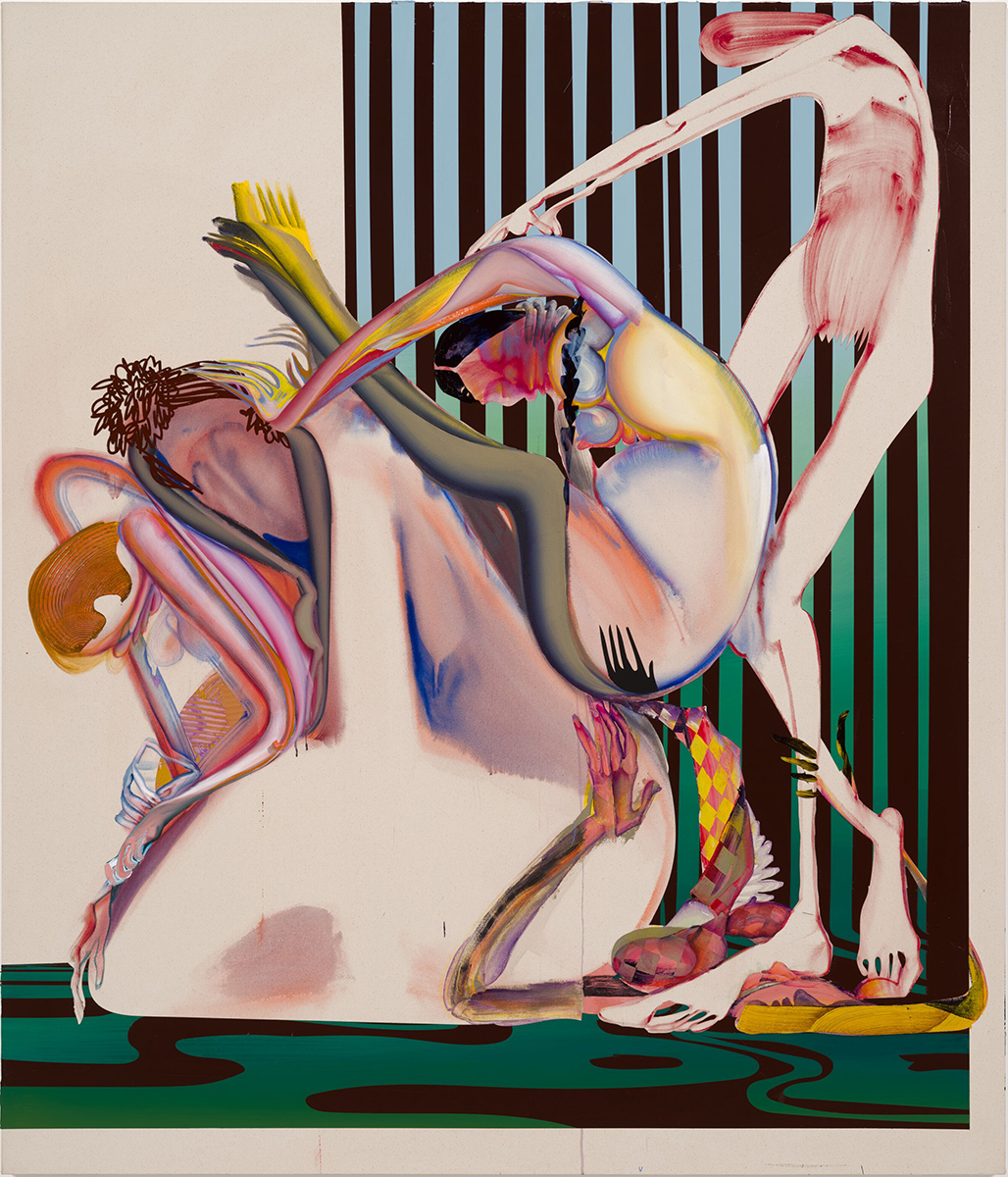
AR ‘Surrealism’ is a word that has been used to situate your work, perhaps with an idea that your figures might look like some of the figures seen in surrealist photographs or painting. Surrealism was often an attempt to undo certain categories of thought, to break free from social constraint or convention in general. There is an echo here of your trying to unlock a way of thinking about embodiment that isn’t categorical, that uses painting and figuration and the space of the canvas to think up new rules of the game, rather than playing some existing game.
CQ Where I always come from is having lived through certain identity categories that I find do exist beyond categorisation, like primarily with my racial identity, and experiencing the isolation and difficulty of that position. There is this theoretical ideal of breaking down categorisation that I find to be not actually liveable, sustainable, or just the way we function as humans in this stage of our evolution. I think that the call for breaking down categories is one that works really well in theory, but not in practice. Being somebody that is multiracial in a system that fundamentally is not designed for that and can’t reconcile the disconnect between looking white while also identifying as a person of colour – that’s just too incongruous. And I find it just leads to a great deal of alienation. Ultimately it creates this sense of not having a sense of self in a social context. Social context only undermines my sense of self. I only feel othered by camaraderie. Maybe it is more like what you’re saying, the idea of recognition is what is needed more than representation. We have this idea that in our art, that if we are too personal or too specific, too individual with what we work with in our practice, it’s going to be selfish and nobody will relate to it. So we try to be more general to appeal to more people and not feel so self-centred. And it’s whenever those general moves are made that it feels actually completely superficial and hard to access as work. I found that for my own work and for other people’s work that I’ve really been able to connect with; it’s because of tapping into this personal and individual experience, it somehow unlocks the ability to trust.
Collapsed Time, a solo exhibition of work by Christina Quarles, is on view at Hamburger Bahnhof, Berlin, through 17 September. Quarles will also have a solo show at Hauser & Wirth Menorca, 17 June – 29 October
